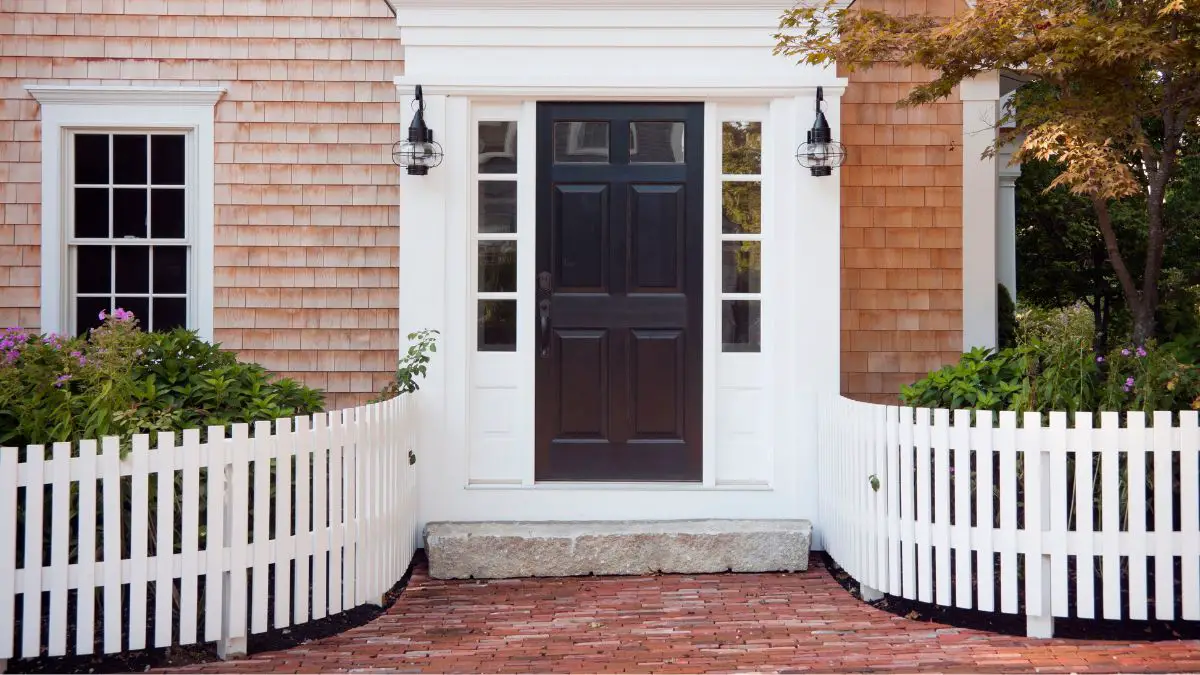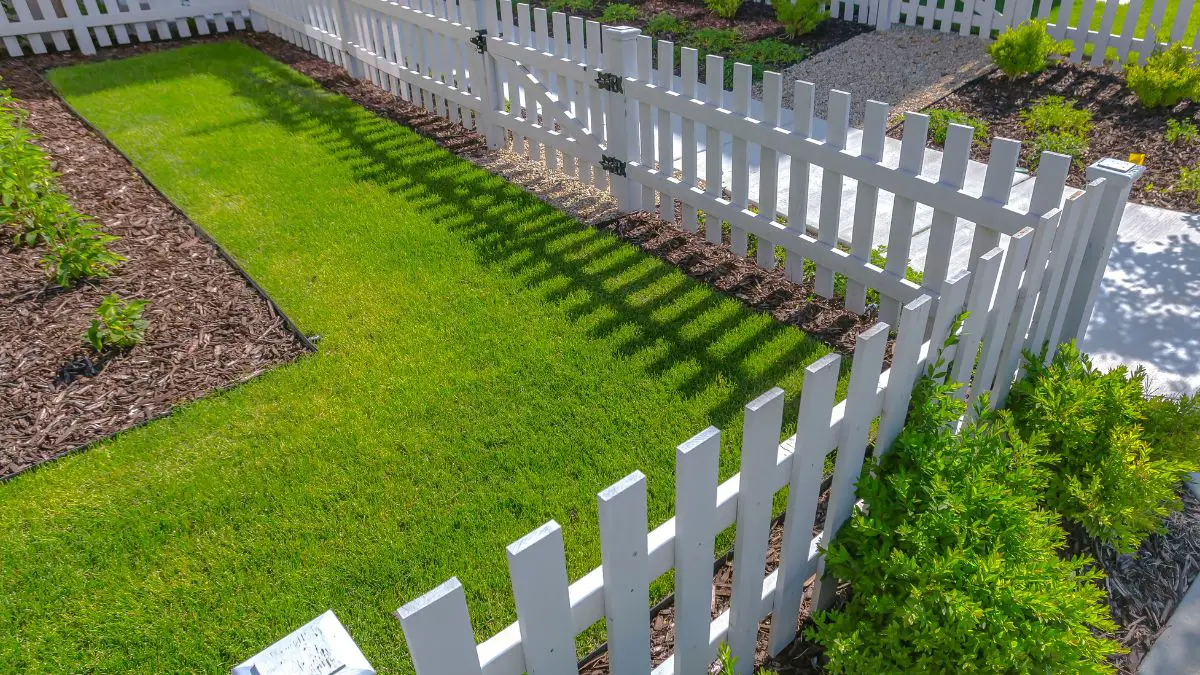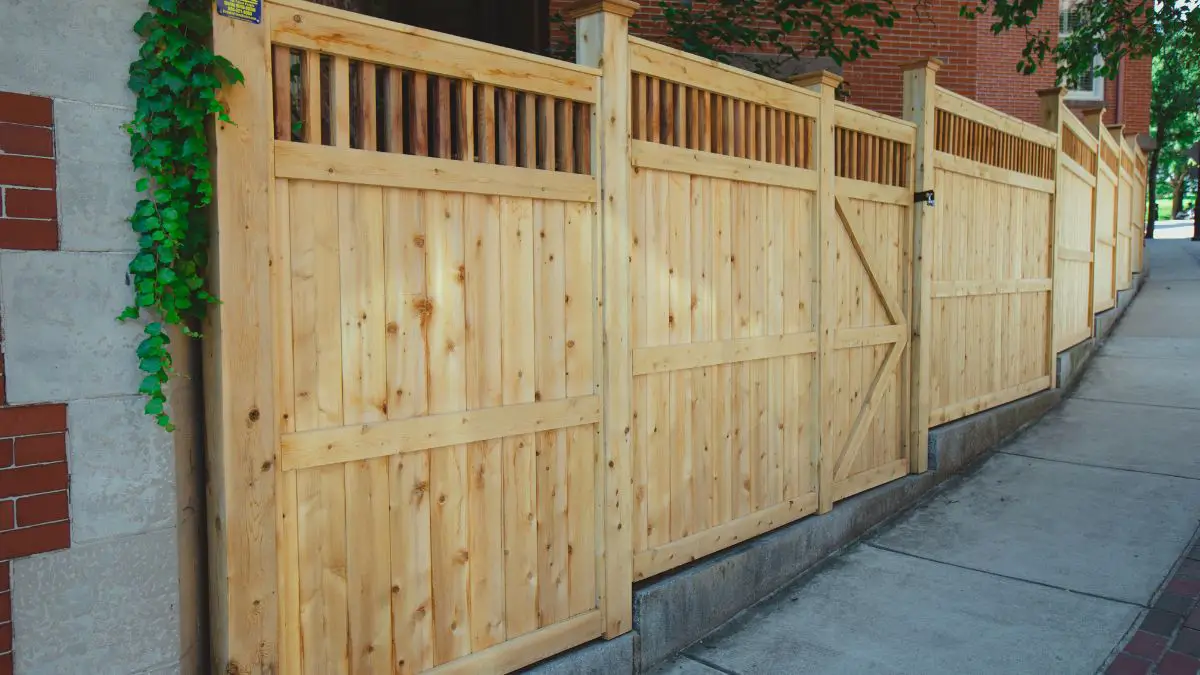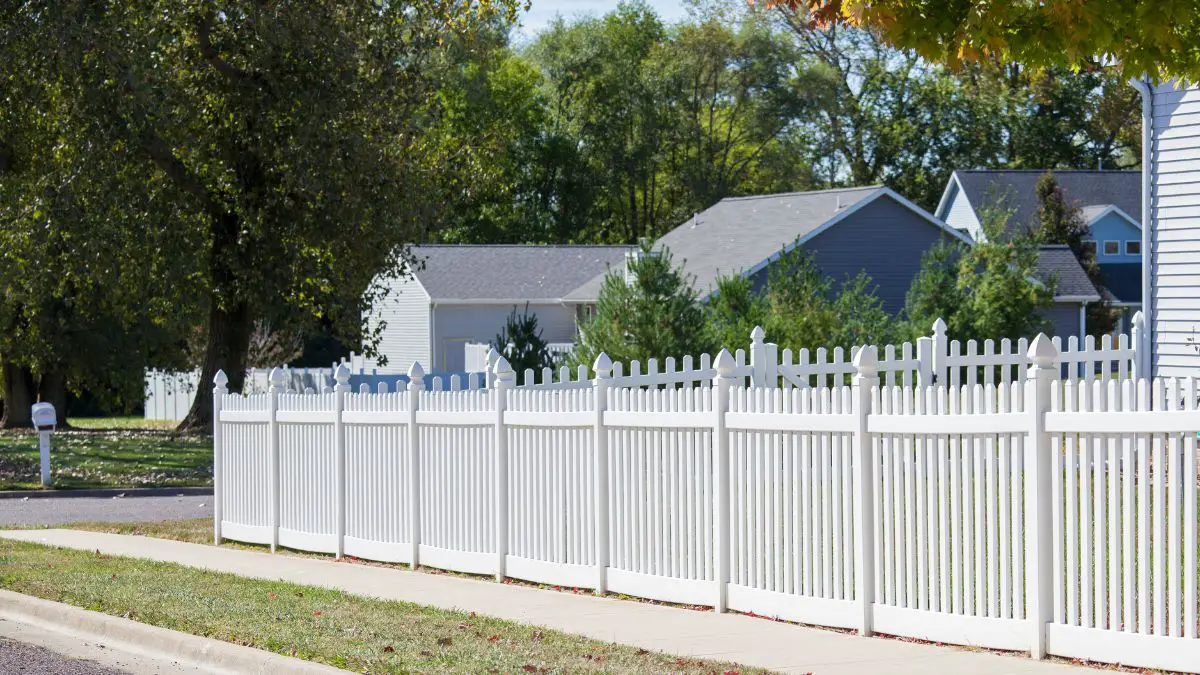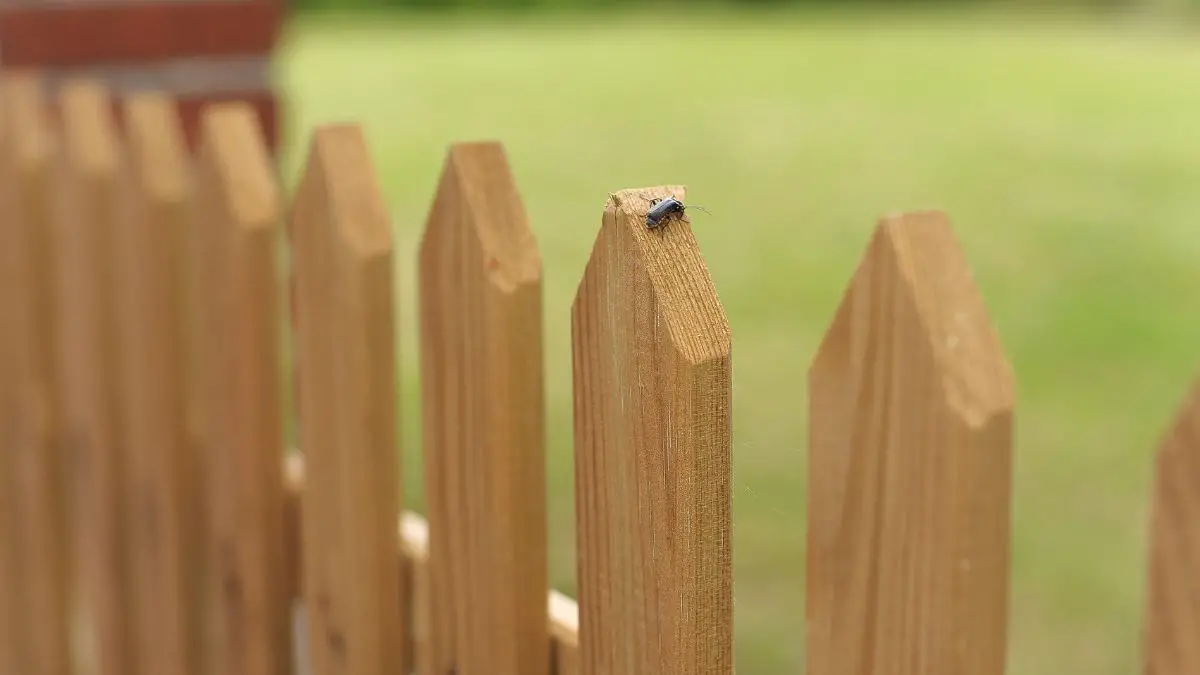Why is fence post spacing so important, you ask? Well, imagine a fence with posts too far apart. It would lack stability, and a strong wind could easily knock it over. On the other hand, posts that are too close together can make the fence look crowded and may waste resources. Striking the perfect balance is key to building a sturdy, aesthetically pleasing fence.
Fence post spacing is the gap between your fence posts, usually 6 to 8 feet apart. This spacing ensures your fence’s strength and aesthetic appeal.
The principles remain the same whether you install a privacy, decorative, or livestock fence. You’ll also learn about local building codes and landscape considerations that can influence your fence post spacing.
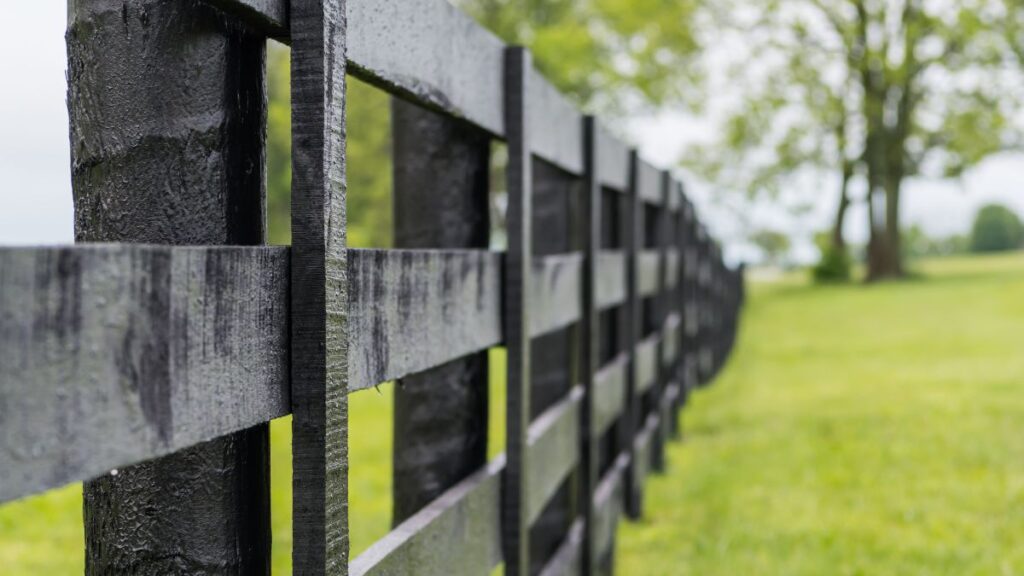
What Does Fence Post Spacing Mean?
Fence post spacing is the term used to describe the gap between two neighboring fence posts along a fence line. This is a critical factor in fence installation, influencing the fence’s robustness, stability, and longevity.
Several elements dictate the spacing of fence posts, including the kind of fence material, the height of the fence, the local wind and weather conditions, and the intended function.
Correct fence post spacing guarantees that the fence stays vertical, avoids sagging or leaning, and can resist the external forces exerted on it.
Delving into the World of Fence Post Spacing
Let’s start with the basics of spacing posts. Fence post spacing refers to the distance between each post in your fence. It’s like the heartbeat of your boundary fence, setting the rhythm for the entire structure.
You might wonder why there is all this fuss about fence post spacing. Well, it’s simple. The spacing between your fence posts plays a pivotal role in the strength and appearance of your fence.
Think about it. A fence is more than just a boundary around your property. It’s a statement. It’s a reflection of your style and your attention to detail. And the spacing of fence posts is one of those details that can make a difference.
Your fence stands tall and strong when you get the spacing just right. It withstands the elements and provides a reliable barrier, whether aiming for privacy, security, or simply marking your property lines.
On the other hand, incorrect fence post spacing can lead to many problems. Posts that are too far apart can make your fence weak and unstable. You might find your fence swaying in the wind or even toppling over in extreme conditions.
Conversely, posts that are too close together can make your fence look crowded and overbearing. It can also lead to unnecessary expenditure on extra costs and labor.
Unraveling the Factors that Influence Fence Post Spacing
Regarding fence post spacing, one size does not fit all. Several factors come into play, each influencing how far apart your fence posts should be. Let’s consider these factors to help you decide on your fence installation project.
Type of Fence Material
First and foremost, the type of material you choose for your fence significantly impacts the post spacing.
- Wooden Fences: Known for their classic beauty, wooden fences often require wooden posts to be closer together due to the weight of the wood. Typically, you might space the wooden posts 6 to 8 feet apart.
- Vinyl Fences: Lightweight and durable, vinyl fences allow for more flexibility in post spacing. You can usually space the posts 8 feet apart, but always check the manufacturer’s recommendations.
- Metal Fences: Whether a sleek aluminum fence or a sturdy chain-link fence, metal fences often require posts to be spaced further apart. This is due to their strength and the design of the fence panels.
The type of fence material influences the post spacing and your fence’s overall look and feel. So, choose wisely!
Purpose of the Fence
The purpose of your fence is another crucial factor to consider. Are you installing a privacy fence to create a secluded haven in your backyard? Or perhaps a decorative wall to enhance your garden’s aesthetics? Or maybe a livestock fence to keep your animals safe? Each purpose calls for a different approach to fence post spacing.
- Privacy Fences: You’ll want your fence posts closer for a solid, uninterrupted barrier. This ensures the panels or pickets are tightly spaced, leaving no gaps for prying eyes.
- Decorative Fences: With decorative fences, it’s all about the design. You might space your posts further apart to showcase a unique picket design or a beautiful wrought-iron pattern.
- Livestock Fences: Regarding livestock fences, the type of animal you’re housing will dictate the post spacing. For instance, horse fencing requires closer post spacing to prevent the horses from sticking their heads between the rails.
Installing a fence involves key decisions on the type of fence posts and their spacing. Chain link fence posts are popular due to their durability and ease of installation. The spacing between chain link fence posts is typically 6 to 10 feet for most residential installations.
A tensile fence, designed to withstand significant force, has posts spaced further apart, typically around 15 to 30 feet. This fence is often used in agricultural settings.
Temporary fencing, like around swimming pools or play areas, may require closer spacing between the fence posts of 4 to 6 feet for adequate support.
Gate posts, which support the weight of the gate, are typically installed with concrete footings to ensure stability, which is particularly important for double drive gates, which are larger and heavier than standard gates.
Local Building Codes and Regulations
Before you start digging those post holes, make sure to check your local building codes and regulations. Some areas have specific rules about fence height, design, and, yes, spacing between fence posts. Ignoring these rules can lead to fines or even having to take down your newly installed fence. So, do your homework!
Landscape and Terrain
Take a good look at your landscape and terrain. A flat, open yard allows for more uniform post spacing. But what if your property is sloping or has uneven terrain? You might need to adjust your fence post spacing to accommodate the landscape.
For instance, you might need to place your posts closer on sloping ground to maintain a level top line. Or, if you’re installing a fence around a garden with many trees or shrubs, you might need to adjust your post spacing to navigate these obstacles.
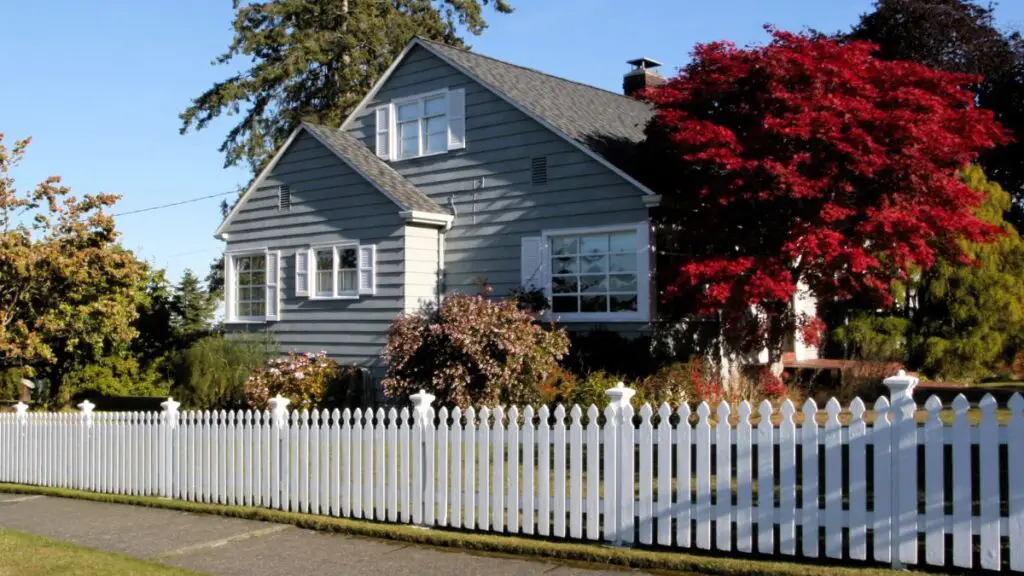
Determining the Perfect Fence Post Spacing: A Step-by-Step Guide
Now that you understand the factors influencing fence post spacing let’s dive into the practical side. How do you determine the ideal spacing between fence posts? Let’s break it down.
The General Rule of Thumb
As a starting point, a common rule of thumb is to space your fence posts 6 to 8 feet apart. This range provides a good balance between stability and material usage. But remember, this is just a guideline. Depending on the type of fence and its purpose, you might need to adjust this spacing.
Adjusting for Different Fence Materials
Different materials have different strengths and weights, which can affect the ideal post spacing.
- Wooden Fences: Due to the wood’s weight, the posts of a wooden fence are typically spaced 6 to 8 feet apart. However, you might need to bring the posts closer together for heavier, privacy-style fences to provide extra support.
- Vinyl Fences: Vinyl is a lightweight material, allowing for more flexibility in post spacing. Typically, you can space your posts 8 feet apart. But always check the manufacturer’s recommendations, as the design of the vinyl panels can influence the ideal spacing.
- Metal Fences: Metal fences, such as chain-link or wrought iron, often allow for the widest post spacing. You can usually space the posts 8 to 10 feet apart. However, you might need to bring the posts closer together for heavier, industrial-style metal fences.
Adjusting for Different Fence Styles
The style of your fence can also influence the spacing between fence posts. Here’s how to adjust the spacing for common fence styles:
- Picket Fences: Picket fences are all about charm and aesthetics. The posts can be spaced further apart, usually 8 feet. But remember to adjust the pickets’ spacing to maintain the classic picket fence look.
- Panel Fences: Panel fences come with pre-made sections dictating the post spacing. Simply measure the length of the panels and space your posts accordingly.
- Post-and-Rail Fences: The spacing depends on the number of rails and the livestock you’re housing for post-and-rail fences. For instance, horse fencing requires closer post spacing to prevent the horses from sticking their heads between the rails.
Determining the proper fence post spacing combines science and art. It requires a keen understanding of your materials, a clear vision of your fence’s purpose, and a sensitivity to the landscape. But with these guidelines, you’re well on installing a functional and beautiful fence.
The key to a successful fence installation is patience and precision. Take your time, measure twice, and you’ll end up with a great fence that stands strong for years to come. So, let’s move on to the next step: setting your fence posts!
Your Step-by-Step Guide to Setting Fence Posts
Setting fence posts is a task that requires precision, patience, and a bit of elbow grease. But don’t worry, you’ve got this! Let’s walk through the process together, step by step.
Preparing for the Installation
Before you start digging, there’s some prep work to do. Gather all your materials and tools. You’ll need your fence posts, rails, pickets, a post hole digger, a level, a measuring tape, and some concrete.
Next, check your local building codes and regulations. Ensure your planned fence complies with height, design, and post spacing requirements.
Finally, consider the landscape. Are there any trees, shrubs, or other obstacles in the way? If so, you might need to adjust your fence layout or post spacing to accommodate them.
Marking the Fence Layout and Post Locations
Now, it’s time to mark out your fence layout. Using stakes and string, outline the path of your fence. Make sure to measure carefully to ensure your fence is straight.
Next, mark the locations for your fence posts. Remember the guidelines for fence post spacing we discussed earlier. Measure the distance between posts carefully, and mark each location with a stake or spray paint.
Digging Holes and Setting Fence Posts
Roll up your sleeves because it’s time to start digging! Using a post hole digger, dig a hole at each marked location. The depth of the hole should be about a third of the height of the post, plus an extra 6 inches wide for gravel drainage.
Once the holes are dug, it’s time to set the posts. Place a post in each hole, ensuring it’s plumb with a level. Then, pour in some concrete, following the manufacturer’s instructions. Allow the concrete to set before moving on to the next step.
Installing the Fence Rails and Pickets
With your posts set, you can start installing the rails and pickets. Attach the rails to the posts, ensuring they’re level. Then, attach the pickets to the rails, maintaining consistent proper spacing between each picket.
Your fence style will dictate the rails’ number and placement and the pickets’ proper spacing. So, refer back to the guidelines for your specific fence style.
Building and Installing the Fence Gate
The final step is to build and install the gate. Measure the opening for the gate, and build the gate to fit. Attach the gate to the posts with hinges and install a latch on the other side.
And there you have it! You’ve successfully set your fence posts and built a beautiful, sturdy fence.
Fence installation is a process that requires patience and precision. But with careful planning and attention to detail, you can create a fence that enhances the beauty and privacy of your property. So, take a step back and admire your handiwork. You’ve earned it!
What Should Be the Ideal Distance Between Fence Posts?
Typically, fence posts are spaced between 8 to 12 feet apart. This general guideline may not apply to all situations as the spacing can vary based on the type of fence posts used.
Understanding Fence Post Spacing
The significance of correct fence post spacing for your property cannot be overstated. For instance, if you opt for tensile steel fence posts, the spacing can be around 15 to 20 feet for field fence styles, and for high tensile barbed and smooth wire, it could be between 20-30 feet.
Here’s a handy table to help you determine the ideal fence post spacing based on the type of fence:
| FENCE TYPE | FT. APART |
|---|---|
| Field Fence | 8 – 12 |
| Barbed Wire | 8 – 12 |
| Deer & Orchard | 15 – 20 |
| Deer & Wildlife | 15 – 20 |
| HT Barbed Wire | 20 – 30 |
| HT Smooth Wire | 20 – 30 |
| Keep-safe V-Mesh Horse Fence | 8 – 12 |
| Non-Climb Horse Fence | 8 – 12 |
| Sheep & Goat | 8 – 12 |
| Welded Wire | 8 – 12 |
| Yard, Garden & Kennel | 8 – 12 |
Let’s consider a square 20-acre grassland that requires exactly half a mile of fence. How far apart should the fence posts be placed in the ground?
Following the above guideline, the fence posts can be spaced 8 to 12 feet apart. For a sturdy fence post and durable fence, it should have five steel T-posts to one wooden post.
If you opt for post spacing of around 8 feet, you will need 330 posts. However, if you choose a 12-foot spacing, it will require 220 posts.
There’s a difference of 110 posts between the two spacings, which is significant when considering the cost of materials and labor.
Closely spaced fence posts offer additional strength and safety. They also reduce future maintenance as the fence has more contact points to brace itself against impact.
T-Post Fence Spacing
Fences serve various purposes, such as setting boundaries, keeping animals in or out, and ensuring privacy.
The cost of a fence depends on the material, the size of the posts, and, most importantly, the fence post spacing. The post’s spacing directly affects the fence’s cost as the number of fence posts increases with decreased spacing.
One of the most effective and affordable fences is the “T-Post Fence”. In this, T-Posts are fixed into the ground using a concrete foundation with wire mesh or wire stretched between them.
Correct T-Post Fence Spacing is essential for effective and affordable permanent fencing. The recommended T-post Fence Spacing is 8 – 12 feet.
Determining the Height of a T-Post
Calculating the length of a T-post is a straightforward process. You add the length of the post that will be below ground (a minimum of 3-1/2 feet), the height of the fence post above ground (4 feet), and an additional 6 inches. This sum gives you the minimum height of the post needed to construct a T-post fence.
For instance, consider that you want to establish a 4-foot fence around your boundary.
The total height of the fence would be the depth of the fence in the ground (3-1/2 feet) + the height of the top wire (4 feet) + an extra 6 inches.
This can be calculated as follows:
= 3-1/2 feet + 4 feet + (6 inches/12)
= 8 feet
Therefore, building a T-post fence requires a post at least 8 feet tall.
Keeping Your Fence in Top Shape: A Guide to Fence Maintenance
Congratulations! You’ve successfully installed your fence. But the journey doesn’t end here. Regular maintenance ensures your fence stands strong and looks great for years. Here’s how to keep your fence in top shape.
Regular Inspection and Repair
Just like a car or a house, a fence needs regular check-ups. Make it a habit to inspect your fence every few months. Look for signs of damage, such as cracked or loose posts, broken pickets, or rust on metal fences.
Don’t ignore even minor damage. A small issue can quickly turn into a big problem if left unattended. So, make fence repairs as soon as you spot any damage. This might involve tightening loose screws, replacing broken pickets, or applying rust treatment to metal parts.
Cleaning and Treating the Fence Material
Keeping your fence clean enhances its appearance and extends its lifespan. How you clean your fence depends on the material.
- Wooden Fences: Use a mild detergent and a soft brush to clean wooden fences. Once the fence is clean and dry, apply a wood preservative to protect against rot and insects and a sealant to shield against weather damage.
- Vinyl Fences: Vinyl fences are relatively low-maintenance. Usually, a rinse with a garden hose is enough to keep them clean. For stubborn dirt, use a mild detergent.
- Metal Fences: Metal fences can be cleaned with warm soapy water. If you spot any rust, remove it with a wire brush before applying a rust-inhibiting primer and a fresh coat of paint.
Replacing Fence Posts
Despite your best maintenance efforts, there may come a time when you need to replace a fence post. Whether it’s due to severe weather, an accident, or just old age, replacing a fence post is a task you can tackle yourself.
Frequently Asked Questions About Fence Post Spacing
How deep should fence posts be?
A good rule of thumb is to bury at least one-third of the total length of the post into the ground. For example, if your posts are 9 feet long, aim for a fence post hole depth of about 3 feet. Adding an extra 6 inches for gravel drainage is also a good practice.
How do I adjust fence post spacing for sloping ground?
Installing a fence on sloping ground can be tricky, but it’s doable. The key is to use a method called “stepping.” This involves keeping the panels horizontal, each attached at a higher point than the last. This way, the top of the fence forms a series of steps following the slope of the ground. You might need to place your posts closer to maintain a level top line.
Can I install a fence without concrete?
Yes, installing a fence without concrete is possible, but it’s not recommended for areas with heavy winds or loose soil. Concrete provides extra stability and helps prevent the posts from shifting over time. If you choose to forgo concrete, consider using a gravel base for drainage and thoroughly compacting the soil around the post to increase stability.
What is the lifespan of a fence post?
The lifespan of a fence post depends on several factors, including the material of the post, the climate, and how well the fence is maintained. On average, a well-maintained wooden fence post can last 15 to 20 years, while a vinyl or metal post can last 20 to 30 years. Regular inspection, cleaning, and prompt repairs can help extend the lifespan of your fence posts.


